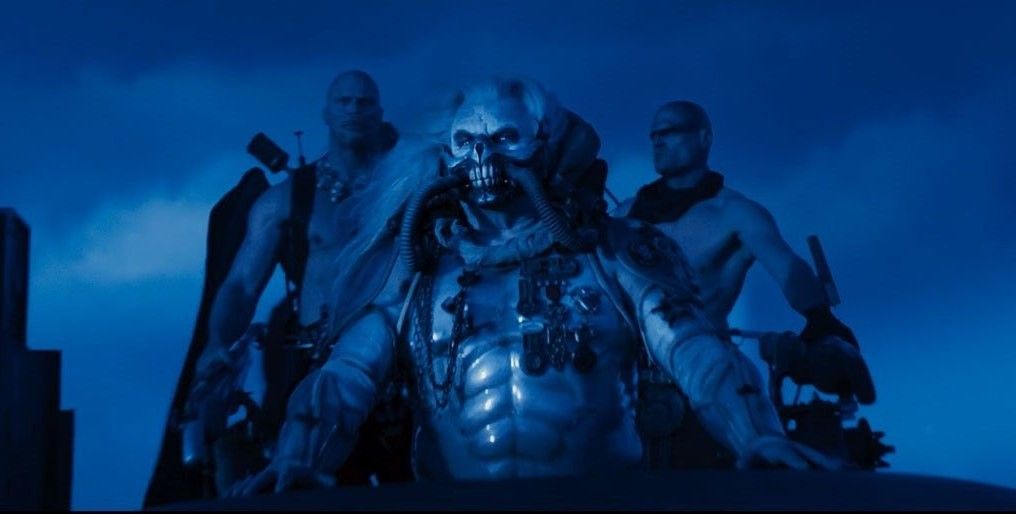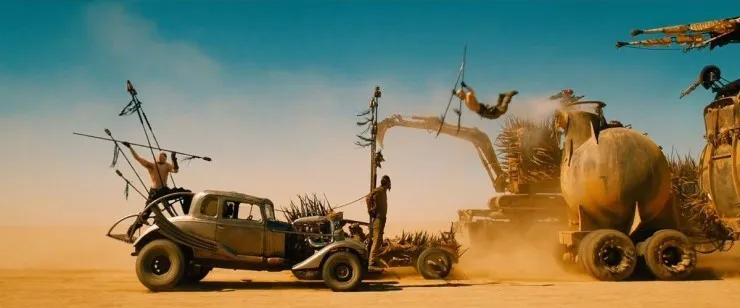
Mad Max: Fury Road can be an assault on the senses, but director George Miller wants to help us understand the chaos we are watching.
Mad Max: Fury Road is a technical and visual marvel that is often regarded as one of the greatest action movies ever made. The film was widely celebrated by critics and fans when it was released in 2015, and received 10 Oscar nominations at the 88th Academy Awards, winning six Oscars for its outstanding technical achievements.
While the spectacle of the film is enough to entertain most viewers, multiple viewing will reveal the inner workings of the world of Fury Road. Within the action scenes, a massive amount of information is given to the audience through quick editing and visual landmarks.
Director Geroge Miller, cinematographer John Seale, and editor Margaret Sixel used their tools to teach the audience where to look in each frame, allowing Miller and Sixel to experiment with their editing throughout the movie. Let's break down how Miller, Seale, and Sixel were able to teach the audience how to watch the fast-paced chaos of Mad Max: Fury Road.

“Miller noticed the trend of quickening edits in the years before he shot Fury Road,” Will Ross wrote on a Twitter thread that breaks down Miller’s and Sixel’s editing process, noting that The Bourne Supremacy was the catalyst for this trend.
Since he figured that audiences were learning how to watch and process quick edits, Miller figured the audience could handle it in Fury Road.
But there is one crucial element that directors and editors have to keep in mind when using this trend. When shots go by faster, they are more difficult to process.
“Action can quickly become incoherent, and while some canny filmmakers embraced [the] chaos, Miller wanted clear, causal chains of action,” Ross wrote. Miller told his DP to keep the most important information in the center of the frame, so the audience can find the subject of the shot before cutting to the next shot.
Every time there is a cut in a movie, the eye searches the shot for what is essential. The eyes are less consistently focused, and often need a formal cue of where to look to understand what they are supposed to notice in the frame.
Composition and the action within the frame help guide the eye. The visual information at the viewer’s center of attention will be perceived in detail and encoded into the audience’s memory.
This is critical for filmmakers to understand since it will influence how the audience experiences a film.
Video is no longer available: twitter.com/SadHillWill/status/1575371486021713921
There are many ways to play with this technique. For example, Paul Thomas Anderson and Robert Elswit want you to feel lost when watching There Will Be Blood. They wanted to establish a sense of the vastness of the space before refocusing on Daniel Plainview’s story.
But Miller and Seale did not want the audience to feel lost. Sure, they will overwhelm you with quick edits and fast-paced action, but they want you to understand and enjoy the story. They do this by using a center-framing technique.
The camera goes through elaborate movements and hits almost unnatural angles to keep the subjects in the center. Other times, the camera will gracefully move from one focus to center another within a single shot.
Ross believes that “Miller could have allowed the movement within the frame to guide our eye[s] alone in that moment,” but Miller was determined to teach the audience how to watch the film by keeping the most important subject in the center of the frame at all times.
Another way that Fury Road keeps the audience’s eyes on the center of the frame is the film’s very wide aspect ratio of 2.38:1. Why have such a wide aspect ratio if the audience is supposed to focus on the subjects at the center of the shot?
“The intent is for us to understand that the most important thing in the frame will always be at the center,” Ross wrote. “Not that nothing relevant will ever be on the sides of the frame.”
Yes, there is action happening on the sides of the shot, but they do not push the story forward. This side action adds a layer to the world of the film, which makes the film excellent for rewatchability, but it is not essential for audiences to notice.
Because Seale is consistent with the composition of shots in Fury Road, the audience learned that they don’t have to quickly scan the frame in action scenes. The viewers trust that Miller will not change the visual rules, which gives Miller and Sixel the freedom to play with quick edits.
To give you an idea of how quick the cuts are in Fury Road, the average shot length is 2.6 seconds. That’s still pretty fast for most viewers, but it turns out that viewers can retain some ability to comprehend what we’re looking at thanks to our field of vision being able to notice things beyond our direct focus.
In the chain-pulling scene between Max (Tom Hardy), Nux (Nicholas Hoult), and the five wives, the truck is always placed in the top corner of the frame and angled in such a way that it becomes a visual landmark in the scene. This is a technique known as axial edits.
An axial edit is a type of jump cut that moves straight toward or away from the subject of the shot while closely retaining the subject’s position in the frame. The cut is used to maintain the illusion of continuity.
Miller gives us the truck as a visual landmark to establish the scene’s main focus—the chain.
When one of the wives pulls, Max is yanked. When someone pulls the other, Nux is yanked. MIller goes back and further in depth to make the physicality of the chain and its causal effects clear to the viewer by giving us something consistent in the scene.
As the scene goes on, Miller and Sixel feel confident that the audience will have a clear understanding of what is happening in the scene and take away the clear geographical landmark for reference. The edits are sped up to take full advantage of the visceral power of rapid cutting, and the audience knows someone will fall whenever a chain is pulled.
Miller’s and his team’s consistency allows them to play with complex techniques that not only help the audience to understand what is happening, but also aid in the tone, pace, and visual storytelling of Mad Max: Fury Road.
Miller is showing off his brilliance as a filmmaker while also maintaining empathy and respect for the audience. Many viewers are not familiar with rapid cutting or axial edits, yet Miller takes the time to teach the audience how to watch a scene before diving into the full complex beauty of the edit.
What is your favorite scene in Mad Max: Fury Road? Let us know why you love it in the comments!
Your Comment